
Explore Munich & Switzerland in 10 Days: Perfect Alpine Escape
 10 Day Tour of Munich, Zurich and Lucerne
10 Day Tour of Munich, Zurich and Lucerne
Overview
Trip Map
Itinerary
Inclusions
Reviews







10 Days 9 Nights
Best Time: Jan-Dec
Nature Lovers
History Buffs
Visit Munich, Zurich, and Lucerne on an enchanting 10-day trip combining natural wonders and historic marvels. Experience the Swiss and Bavarian Alps on three excursions, while also getting to know the cities intimately. From the architectural grandeur and lively beer gardens of Munich to the quaint streets and panoramic vistas in Zurich, and the serene beauty of Lucerne with its mountainous backdrop and crystal-clear lake, the tour is meticulously designed for the discerning explorer. Private guided tours in each city ensure personal discoveries, while our mobile app offers detailed travel guidance, making the journey easy and stress-free.
- Take a guided tour in Munich's historic core and relax with locals in its famous beer gardens.
- Discover Zurich's medieval riches and the vibrant life along the Limmat River on a guided walk.
- Venture out of Munich to Neuschwanstein, the fairy-tale castle of half-mad Bavarian King Ludwig II.
- In Lucerne, a private tour takes you to the Lion Monument, Chapel Bridge, and Lake Lucerne's shores.
- Ascend Mount Pilatus on the world's steepest cog-wheel train to witness a panorama of Swiss Alps.
Visit Munich, Zurich, and Lucerne on an enchanting 10-day trip combining natural wonders and historic marvels. Experience the Swiss and Bavarian Alps on three excursions, while also getting to know the cities intimately. From the architectural grandeur and lively beer gardens of Munich to the quaint streets and panoramic vistas in Zurich, and the serene beauty of Lucerne with its mountainous backdrop and crystal-clear lake, the tour is meticulously designed for the discerning explorer. Private guided tours in each city ensure personal discoveries, while our mobile app offers detailed travel guidance, making the journey easy and stress-free.
- Take a guided tour in Munich's historic core and relax with locals in its famous beer gardens.
- Discover Zurich's medieval riches and the vibrant life along the Limmat River on a guided walk.
- Venture out of Munich to Neuschwanstein, the fairy-tale castle of half-mad Bavarian King Ludwig II.
- In Lucerne, a private tour takes you to the Lion Monument, Chapel Bridge, and Lake Lucerne's shores.
- Ascend Mount Pilatus on the world's steepest cog-wheel train to witness a panorama of Swiss Alps.

Old Town
Architecture

Residence Palace
Castles & Chateaux

Deutsches Museum
Museums & Galleries

The English Gardens
Parks & Gardens

Fraumunster
Churches & Monasteries

Lake Zurich
Natural Beauty

Chapel Bridge
Natural Beauty

Lake Lucerne
Natural Beauty

Old Town
Historic Landmarks
Must see sights

Old Town
Architecture

Residence Palace
Castles & Chateaux

Deutsches Museum
Museums & Galleries

The English Gardens
Parks & Gardens

Fraumunster
Churches & Monasteries

Lake Zurich
Natural Beauty

Chapel Bridge
Natural Beauty

Lake Lucerne
Natural Beauty

Old Town
Historic Landmarks
Starting from
$3095
per person
 Not included
Not included Secure Your Customizable Trip
Enter your details to embark on a journey that can be tailored just for you.
Start
Travelers
0 travelers
Add Room
Remove Room
Preferred Hotel Stars
Select Hotel Stars
Craft Your Own Itinerary
Select your interests and destinations for a trip plan inspired by you.
Bavaria to Swiss Alps Trip - Map & Itinerary
Enable/Disable Map Scrolling
Click To Make Map Interactive

Bavaria to Swiss Alps Trip Timeline
 Edit Details
Edit DetailsArrival
3 nights
Munich
Germany
Train: 4.5h
3 nights
Zurich
Switzerland
Train: 1h
3 nights
Lucerne
Switzerland
Departure
Day-By-Day Itinerary of Bavaria to Swiss Alps Trip
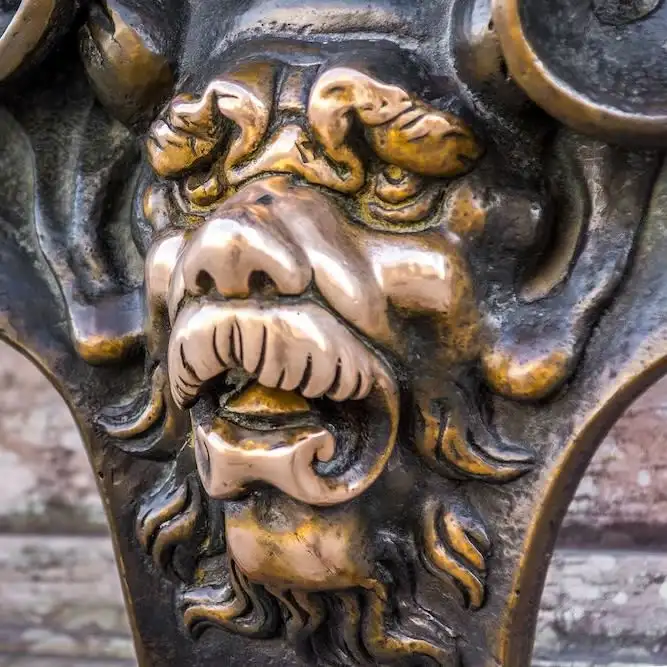
Day 1
Arrive Munich
Day 1
Arrive Munich



To Be Determined
Transfer from Airport
Munich has one main airport, Munich International Airport, where almost all visitors arrive. Taxis are available directly at the terminal exit, or you can arrange a private transfer for added convenience. The cheapest and fastest way to reach central Munich from is by train. The regional "S-bahn" trains delivers you from the airport train station (just follow the signs) directly to Munich's main station (München hbf) in the center of the city, from where you can easily hail a taxi that will be much less expensive than from the airport.

Day 1
Arrive Munich


Day 1
Arrive Munich




To Be Determined:
Transfer from Airport
Mid-Day/Afternoon:
Residence Palace
Early Evening:
Maxvorstadt


Day 2
Munich
Day 2
Munich



9:00 AM - 11:30 AM
Guided Walk Tour of Historic Munich
Munich contains many reminders of a long and varied history but also encompasses the modern features of a strong and vibrant city. The insights of a local help make sense of the traditions, trends, and promises of Bavaria's Capital - sometimes referred to as the city of laptops and lederhosen. On this tour, your guide will show you the highlights of Munich and point out the many hidden treasures.

Day 2
Munich



Day 3
Munich
Day 3
Munich

Early Morning to Afternoon
Excursion to Neuschwanstein Castle
An inspiration for the Disney Castles, numerous fairy tales, and countless dreamers, the Castle of Neuschwanstein is perhaps the most famous castle in the world. The eccentric Bavarian King Ludwig II created this amazing palace in the 19th century as an idyllic version of a medieval castle. You can visit by taking a guided tour from Munich or traveling independently by train and bus. In addition to enjoying spectacular views you can take a guided tour of the castle interior which is well worth the experience (but keep in mind that there a lots of steps to negotiate). If traveling independentally, be sure to book your interior tour reservations at least two days in advance.

Linderhof Palace
Stop by King Ludwig II's smallest palace on your way to Neuschwanstein and explore its delightful gardens.
Show More

Mary's Bridge
Enjoy a stunning view of the castle while suspended over a mountainous gorge.
Show More

Linderhof Palace
Stop by King Ludwig II's smallest palace on your way to Neuschwanstein and explore its delightful gardens.
Show More

Mary's Bridge
Enjoy a stunning view of the castle while suspended over a mountainous gorge.
Show More

Linderhof Palace
Stop by King Ludwig II's smallest palace on your way to Neuschwanstein and explore its delightful gardens.
Show More

Mary's Bridge
Enjoy a stunning view of the castle while suspended over a mountainous gorge.
Show More
prev
next

Day 3
Munich


Linderhof Palace
 Highlight of Excursion to Neuschwanstein Castle
Highlight of Excursion to Neuschwanstein CastleStop by King Ludwig II's smallest palace on your way to Neuschwanstein and explore its delightful gardens.
Another of the eccentric (some say mad) King Ludwig II's creations is Linderhof Palace, which with its fantastic grotto and Moorish pavilion testifies to the king's vision. The smallest of his three palaces that he built, it is the only one that he lived to see completed. The palace is in between Munich and Neuschwanstein, meaning many tours stop there along the way.
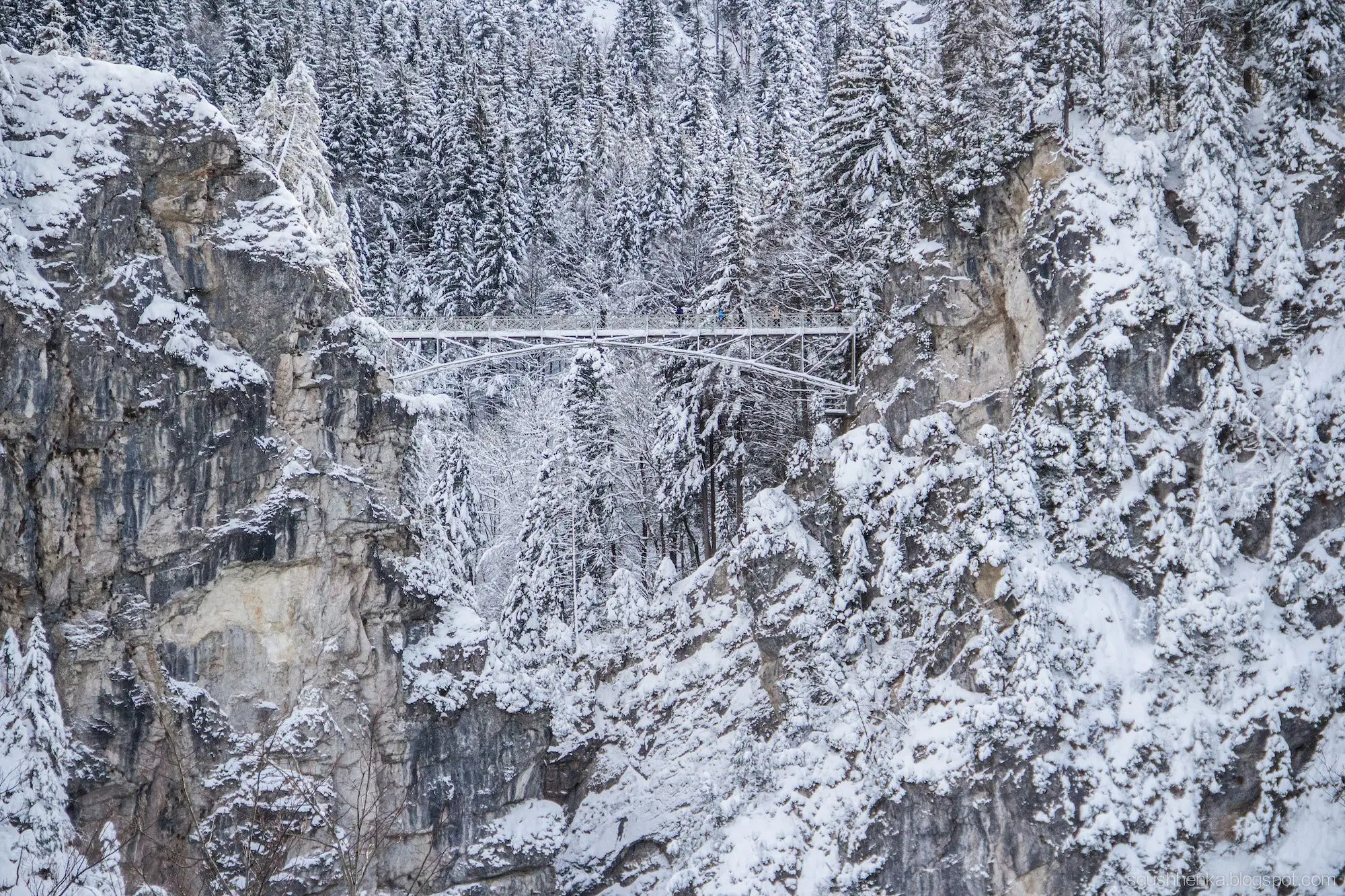
Mary's Bridge
 Highlight of Excursion to Neuschwanstein Castle
Highlight of Excursion to Neuschwanstein CastleEnjoy a stunning view of the castle while suspended over a mountainous gorge.
You definitely won't want to miss taking in the best views and photographs of Neuschwanstein from Marienbrücke (Mary's Bridge) over the dramatic Pöllat Gorge. The minibus terminal is very close at just 5 min walk away, while it's a steepish 10-15min climb on a wide and well-groomed path to get there from behind the castle. As noted above, Mary's Bridge can get a little crowded, so you might have to wait for a gap before you can fit on.

Linderhof Palace
 Highlight of Excursion to Neuschwanstein Castle
Highlight of Excursion to Neuschwanstein CastleStop by King Ludwig II's smallest palace on your way to Neuschwanstein and explore its delightful gardens.
Another of the eccentric (some say mad) King Ludwig II's creations is Linderhof Palace, which with its fantastic grotto and Moorish pavilion testifies to the king's vision. The smallest of his three palaces that he built, it is the only one that he lived to see completed. The palace is in between Munich and Neuschwanstein, meaning many tours stop there along the way.

Mary's Bridge
 Highlight of Excursion to Neuschwanstein Castle
Highlight of Excursion to Neuschwanstein CastleEnjoy a stunning view of the castle while suspended over a mountainous gorge.
You definitely won't want to miss taking in the best views and photographs of Neuschwanstein from Marienbrücke (Mary's Bridge) over the dramatic Pöllat Gorge. The minibus terminal is very close at just 5 min walk away, while it's a steepish 10-15min climb on a wide and well-groomed path to get there from behind the castle. As noted above, Mary's Bridge can get a little crowded, so you might have to wait for a gap before you can fit on.

Linderhof Palace
 Highlight of Excursion to Neuschwanstein Castle
Highlight of Excursion to Neuschwanstein CastleStop by King Ludwig II's smallest palace on your way to Neuschwanstein and explore its delightful gardens.
Another of the eccentric (some say mad) King Ludwig II's creations is Linderhof Palace, which with its fantastic grotto and Moorish pavilion testifies to the king's vision. The smallest of his three palaces that he built, it is the only one that he lived to see completed. The palace is in between Munich and Neuschwanstein, meaning many tours stop there along the way.

Mary's Bridge
 Highlight of Excursion to Neuschwanstein Castle
Highlight of Excursion to Neuschwanstein CastleEnjoy a stunning view of the castle while suspended over a mountainous gorge.
You definitely won't want to miss taking in the best views and photographs of Neuschwanstein from Marienbrücke (Mary's Bridge) over the dramatic Pöllat Gorge. The minibus terminal is very close at just 5 min walk away, while it's a steepish 10-15min climb on a wide and well-groomed path to get there from behind the castle. As noted above, Mary's Bridge can get a little crowded, so you might have to wait for a gap before you can fit on.
prev
next

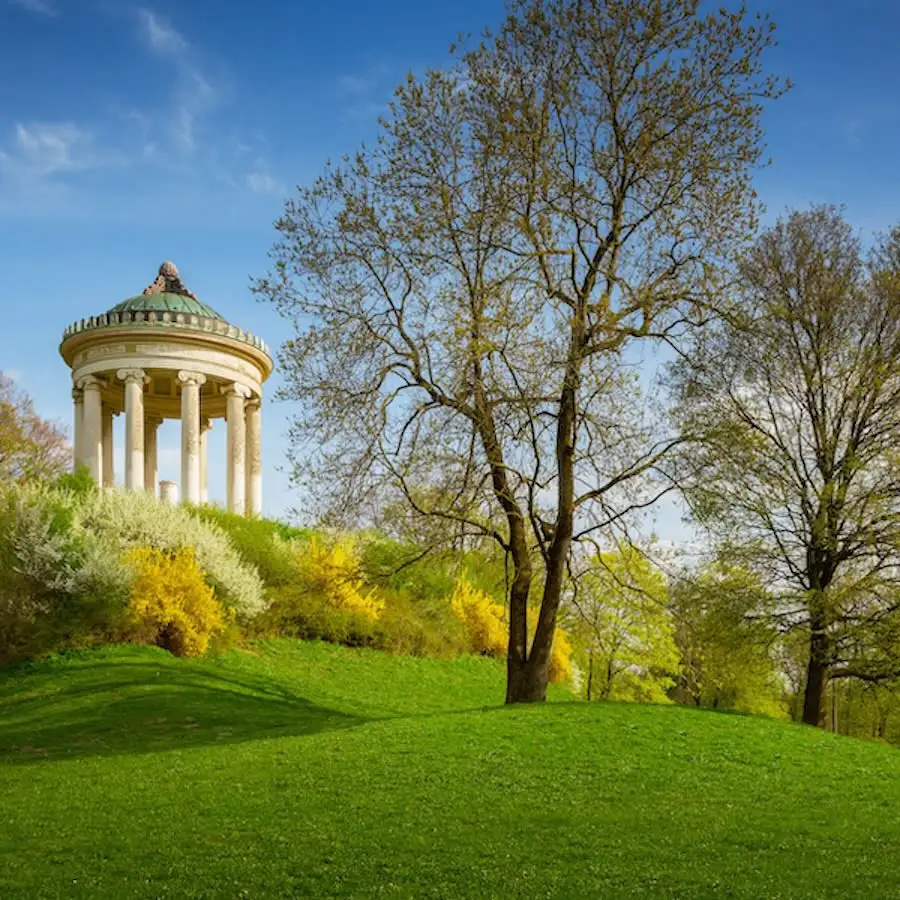
Day 4
Munich to Zurich
Day 4
Munich to Zurich




Morning/Mid-Day
English Gardens
The English Garden is one of Europe's largest parks; in fact, it is larger than New York's Central Park. While it is called the "English Garden" after the style of the park, it was actually designed by an American-Englishman and is now a symbol of the very Bavarian city of Munich. The park is a perfect place to escape the city for a long stroll, where you can enjoy the natural scenery and the people watching.

Chinese Tower
Enjoy some Bavarian brews with the locals in Munich's second largest beer garden.
Show More

Eisbachwelle
Watch surfers catch some waves in the middle of the city.
Show More

Chinese Tower
Enjoy some Bavarian brews with the locals in Munich's second largest beer garden.
Show More

Eisbachwelle
Watch surfers catch some waves in the middle of the city.
Show More

Chinese Tower
Enjoy some Bavarian brews with the locals in Munich's second largest beer garden.
Show More

Eisbachwelle
Watch surfers catch some waves in the middle of the city.
Show More
prev
next

Day 4
Munich to Zurich


Chinese Tower
 Highlight of English Gardens
Highlight of English GardensEnjoy some Bavarian brews with the locals in Munich's second largest beer garden.
Located in the middle of the English Gardens, this beer garden (7,000 seats) is located beneath the wooden Chinese Tower. The 25 meter high (75 feet) pagoda was built in 1789 during a pan-European craze for all things East Asian. The food stalls around the pagoda offer traditional beer garden food such as Steckerlfisch (grilled fish on a stick), Hendl (roasted chicken) and Schweinshaxn (roasted pork knuckle). The beer served is Hofbräu and a Maß Hell (lager).
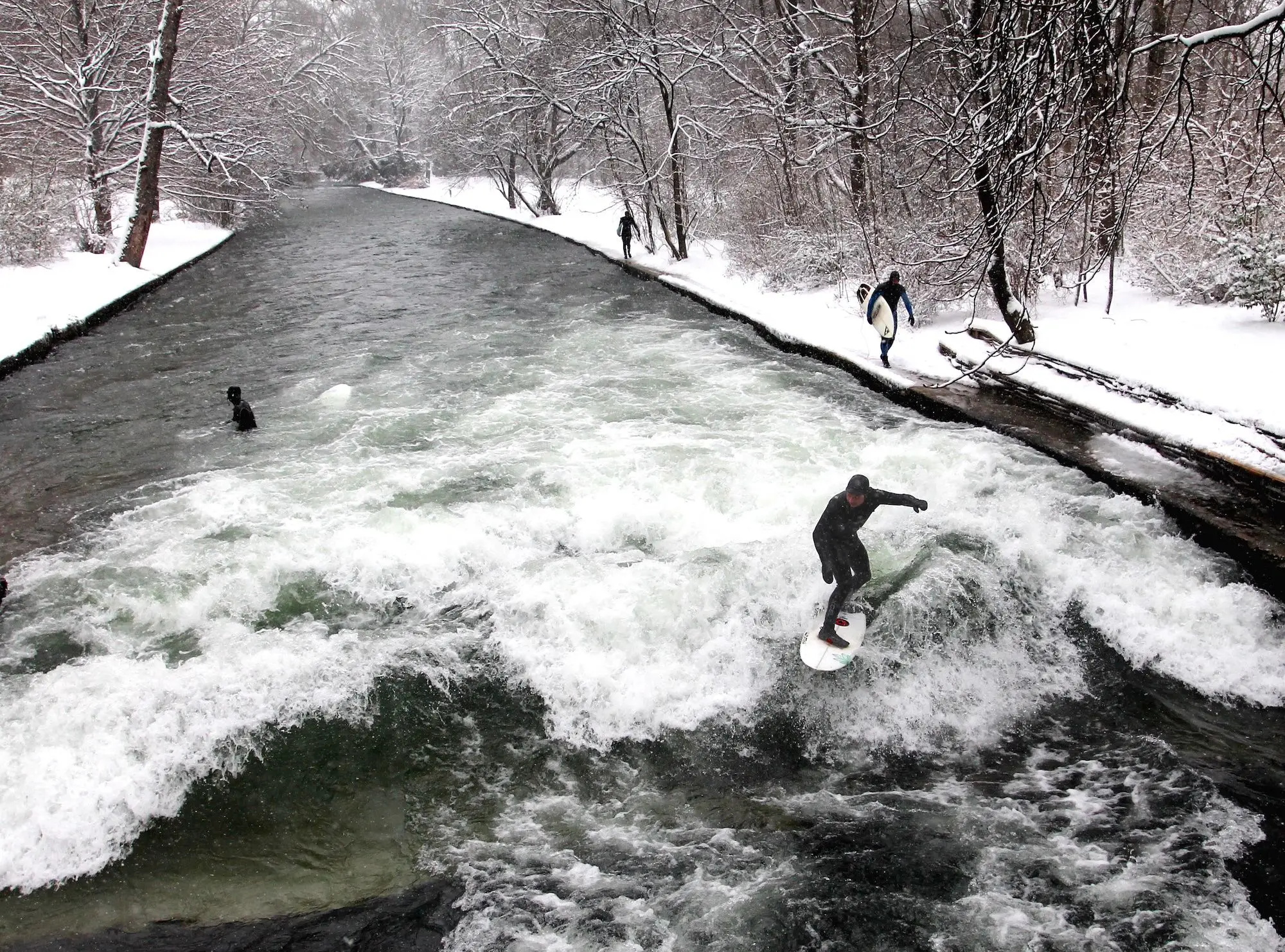
Eisbachwelle
 Highlight of English Gardens
Highlight of English GardensWatch surfers catch some waves in the middle of the city.
At the extreme southern end of the park you can find one of the more unusual and entertaining pastimes enjoyed by the locals - surfing on the man-made Eisbach river. There is a standing wave produced by the water pumping mechanism and surfers line up along the bank taking turns entering the water with their boards. After a minute or so, successful surfers will voluntarily drop out, returning to the end of the line allowing the next person in line an opportunity. The water is cold and shallow (sometimes only 40 cm deep), making it suitable only for experienced surfers.

Chinese Tower
 Highlight of English Gardens
Highlight of English GardensEnjoy some Bavarian brews with the locals in Munich's second largest beer garden.
Located in the middle of the English Gardens, this beer garden (7,000 seats) is located beneath the wooden Chinese Tower. The 25 meter high (75 feet) pagoda was built in 1789 during a pan-European craze for all things East Asian. The food stalls around the pagoda offer traditional beer garden food such as Steckerlfisch (grilled fish on a stick), Hendl (roasted chicken) and Schweinshaxn (roasted pork knuckle). The beer served is Hofbräu and a Maß Hell (lager).

Eisbachwelle
 Highlight of English Gardens
Highlight of English GardensWatch surfers catch some waves in the middle of the city.
At the extreme southern end of the park you can find one of the more unusual and entertaining pastimes enjoyed by the locals - surfing on the man-made Eisbach river. There is a standing wave produced by the water pumping mechanism and surfers line up along the bank taking turns entering the water with their boards. After a minute or so, successful surfers will voluntarily drop out, returning to the end of the line allowing the next person in line an opportunity. The water is cold and shallow (sometimes only 40 cm deep), making it suitable only for experienced surfers.

Chinese Tower
 Highlight of English Gardens
Highlight of English GardensEnjoy some Bavarian brews with the locals in Munich's second largest beer garden.
Located in the middle of the English Gardens, this beer garden (7,000 seats) is located beneath the wooden Chinese Tower. The 25 meter high (75 feet) pagoda was built in 1789 during a pan-European craze for all things East Asian. The food stalls around the pagoda offer traditional beer garden food such as Steckerlfisch (grilled fish on a stick), Hendl (roasted chicken) and Schweinshaxn (roasted pork knuckle). The beer served is Hofbräu and a Maß Hell (lager).

Eisbachwelle
 Highlight of English Gardens
Highlight of English GardensWatch surfers catch some waves in the middle of the city.
At the extreme southern end of the park you can find one of the more unusual and entertaining pastimes enjoyed by the locals - surfing on the man-made Eisbach river. There is a standing wave produced by the water pumping mechanism and surfers line up along the bank taking turns entering the water with their boards. After a minute or so, successful surfers will voluntarily drop out, returning to the end of the line allowing the next person in line an opportunity. The water is cold and shallow (sometimes only 40 cm deep), making it suitable only for experienced surfers.
prev
next


Day 5
Zurich
Day 5
Zurich



9:00 AM - 11:30 AM
Old Town Zurich Tour
During this 2.5-hour private walking tour, you will learn how Switzerland became Switzerland, and why Zurich is its most populated and important city. The walk towards the lake will take you to the Lindenhof, where you will enjoy a marvelous view of the Limmat all the way over to the Grossmünster. From there you will head to the Fraumünster, passing by St. Peter's Church, which bears the biggest clock face in Europe. Passing by the side of the city's Grossmünster, you will walk from the Lake to the Niederdorfstrasse, where you will experience the focal point of Zurich's restaurants and bars.

Day 5
Zurich


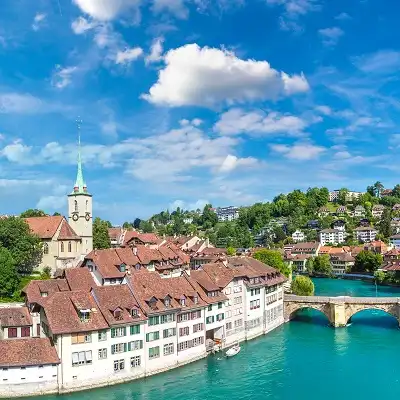
Day 6
Zurich
Day 6
Zurich


Morning to Late Afternoon
Bern
As Switzerland's low key and charming federal capital, Bern has often been at the heart of Swiss history, yet it's still a relatively small town with quiet, cobbled medieval lanes framed by arcaded buildings and a traffic-free Old Town that prompted UNESCO to grant it World Heritage Site status. This could be the world's most attractive and relaxing capital city.

Münster
13th century of red sandstone cathedral
Show More

Stadtkirche (Old Town Church)
Originally built in 1180, before being rebuilt in 1244 after a fire ravaged the original construction.
Show More

Münster
13th century of red sandstone cathedral
Show More

Stadtkirche (Old Town Church)
Originally built in 1180, before being rebuilt in 1244 after a fire ravaged the original construction.
Show More

Münster
13th century of red sandstone cathedral
Show More

Stadtkirche (Old Town Church)
Originally built in 1180, before being rebuilt in 1244 after a fire ravaged the original construction.
Show More
prev
next

Day 6
Zurich


Münster
 Highlight of Bern
Highlight of Bern13th century of red sandstone cathedral
Built in the 13th century of red sandstone, and rebuilt following the earthquake of 1356, the tower of St George on the left of the main frontage is one surviving element of the original church. Inside, the north aisle holds the tomb of the Renaissance humanist Erasmus. Highlights include the nearby St Vincent panel, a Romanesque relief which tells the story of the martyrdom of the saint in 312 AD, and the tomb of Queen Anna, wife of Rudolf of Hapsburg, who chose to be buried in Basel alongside her three-year-old son Karl in an attempt to make up for her husband's cruelty while ruling the town during the 1270s. Also, be sure to wander through the wonderfully atmospheric cloisters.

Stadtkirche (Old Town Church)
 Highlight of Bern
Highlight of BernOriginally built in 1180, before being rebuilt in 1244 after a fire ravaged the original construction.
The interior is decorated with huge frescoes painted by the Bernese artist, Paul Zehnder. It also contains a fine Baroque organ dating from the 18th century.

Münster
 Highlight of Bern
Highlight of Bern13th century of red sandstone cathedral
Built in the 13th century of red sandstone, and rebuilt following the earthquake of 1356, the tower of St George on the left of the main frontage is one surviving element of the original church. Inside, the north aisle holds the tomb of the Renaissance humanist Erasmus. Highlights include the nearby St Vincent panel, a Romanesque relief which tells the story of the martyrdom of the saint in 312 AD, and the tomb of Queen Anna, wife of Rudolf of Hapsburg, who chose to be buried in Basel alongside her three-year-old son Karl in an attempt to make up for her husband's cruelty while ruling the town during the 1270s. Also, be sure to wander through the wonderfully atmospheric cloisters.

Stadtkirche (Old Town Church)
 Highlight of Bern
Highlight of BernOriginally built in 1180, before being rebuilt in 1244 after a fire ravaged the original construction.
The interior is decorated with huge frescoes painted by the Bernese artist, Paul Zehnder. It also contains a fine Baroque organ dating from the 18th century.

Münster
 Highlight of Bern
Highlight of Bern13th century of red sandstone cathedral
Built in the 13th century of red sandstone, and rebuilt following the earthquake of 1356, the tower of St George on the left of the main frontage is one surviving element of the original church. Inside, the north aisle holds the tomb of the Renaissance humanist Erasmus. Highlights include the nearby St Vincent panel, a Romanesque relief which tells the story of the martyrdom of the saint in 312 AD, and the tomb of Queen Anna, wife of Rudolf of Hapsburg, who chose to be buried in Basel alongside her three-year-old son Karl in an attempt to make up for her husband's cruelty while ruling the town during the 1270s. Also, be sure to wander through the wonderfully atmospheric cloisters.

Stadtkirche (Old Town Church)
 Highlight of Bern
Highlight of BernOriginally built in 1180, before being rebuilt in 1244 after a fire ravaged the original construction.
The interior is decorated with huge frescoes painted by the Bernese artist, Paul Zehnder. It also contains a fine Baroque organ dating from the 18th century.
prev
next


Day 7
Zurich to Lucerne
Day 7
Zurich to Lucerne





9:05 AM
Taxi to Zurich Rail Station
Zurich taxis are generally reliable and honest, so this is cheaper than a pre-arranged transfer. If you are picked up one hour prior to departure, you should have plenty of time to catch your train.

Day 7
Zurich to Lucerne


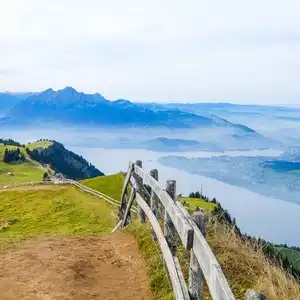
Day 8
Lucerne
Day 8
Lucerne


Early Morning to Afternoon
Excursion to Rigi Kulm
The majestic viewing point of Rigi Kulm atop a prominent peak sandwiched between the lakes of Lucerne and Zug is accessed via a pleasant boat cruise across Lake Lucerne to Vitznau, followed by a rack-railway train to the summit. On the return journey, you head back down by train to Arth Goldau on the other side of the mountain with still more stupendous views of the surrounding countryside.

Lake Lucerne Boat Docks (Luzern Bahnhofquai)
Show More
Show More


Lake Lucerne Boat Docks (Luzern Bahnhofquai)
Show More
Show More


Lake Lucerne Boat Docks (Luzern Bahnhofquai)
Show More
Show More


Lake Lucerne Boat Docks (Luzern Bahnhofquai)
Show More
Show More


Lake Lucerne Boat Docks (Luzern Bahnhofquai)
Show More
Show More

prev
next

Day 8
Lucerne


Lake Lucerne Boat Docks (Luzern Bahnhofquai)
 Highlight of Excursion to Rigi Kulm
Highlight of Excursion to Rigi Kulm

Lake Lucerne Boat Docks (Luzern Bahnhofquai)
 Highlight of Excursion to Rigi Kulm
Highlight of Excursion to Rigi Kulm

Lake Lucerne Boat Docks (Luzern Bahnhofquai)
 Highlight of Excursion to Rigi Kulm
Highlight of Excursion to Rigi Kulm

Lake Lucerne Boat Docks (Luzern Bahnhofquai)
 Highlight of Excursion to Rigi Kulm
Highlight of Excursion to Rigi Kulm

Lake Lucerne Boat Docks (Luzern Bahnhofquai)
 Highlight of Excursion to Rigi Kulm
Highlight of Excursion to Rigi Kulm
prev
next


Day 9
Lucerne
Day 9
Lucerne


Early Morning to Mid-Day
Excursion to Mount Pilatus
Ride the steepest rack-railway in the world at a gradient of nearly 48 percent from Alpnachstad up the giant mountain of Mt Pilatus that looms over the city of Lucerne, or glide up the other side on a gondola from Kriens. The highest point, Tomlishorn, with superlative views of Lake Lucerne, is only 30min on foot from the hotels and restaurants near the top.

Kriens-Pilatus Cable Car Station
Show More
Show More


Kriens-Pilatus Cable Car Station
Show More
Show More


Kriens-Pilatus Cable Car Station
Show More
Show More


Kriens-Pilatus Cable Car Station
Show More
Show More


Kriens-Pilatus Cable Car Station
Show More
Show More

prev
next

Day 9
Lucerne

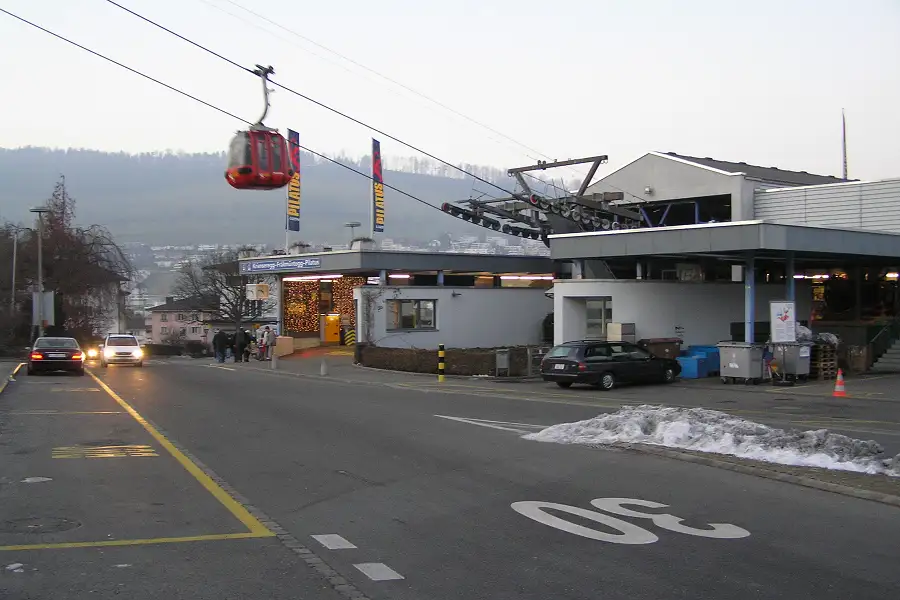
Kriens-Pilatus Cable Car Station
 Highlight of Excursion to Mount Pilatus
Highlight of Excursion to Mount Pilatus

Kriens-Pilatus Cable Car Station
 Highlight of Excursion to Mount Pilatus
Highlight of Excursion to Mount Pilatus

Kriens-Pilatus Cable Car Station
 Highlight of Excursion to Mount Pilatus
Highlight of Excursion to Mount Pilatus

Kriens-Pilatus Cable Car Station
 Highlight of Excursion to Mount Pilatus
Highlight of Excursion to Mount Pilatus

Kriens-Pilatus Cable Car Station
 Highlight of Excursion to Mount Pilatus
Highlight of Excursion to Mount Pilatus
prev
next


Day 10
Depart Lucerne
Day 10
Depart Lucerne

To Be Determined
Rail or Taxi to Zurich Airport
The most affordable way to reach the airport is via train from the Lucerne rail station. In most cases, your itinerary will include a Swiss Travel Pass, which covers the cost of this scenic journey to Zurich Airport, which takes just over 1 hour. If you prefer, you can also take a taxi or book a pre-arranged transfer. The journey by car takes only about 45 minutes. Directions and instructions for either option are included in the Full Itinerary, so you can enjoy a stress-free trip to the airport.

Day 10
Depart Lucerne


What's Included In Bavaria to Swiss Alps Trip

Pre-Paid Tours and Activities:
- Guided Walk Tour of Historic Munich
- Private Introductory tour of the Zurich Old Town
- Private Walking Tour of Lucerne
- City Card for Munich, including discounts to many popular attractions

Pre-Paid Transportation:
- 2nd Class Train Tickets from Munich-Zurich
- Public Transport Tickets for Munich
- Swiss Travel Pass

Accommodation:
- 3 nights at a hotel of your choice in Munich
- 3 nights at a hotel of your choice in Zurich
- 3 nights at a hotel of your choice in Lucerne

Go Real Travel Mobile App:
- Itinerary Plan & Reservations Info
- Points of Interest
- Detailed Travel Information
- Maps & Directions
Other Trips You May Like

14 Days
From$4300USD
City Vistas and Mountain Redoubts in Switzerland, Austria and Prague

Switzerland, Austria, Czech Republic

14 Days
From$3885USD

14 Days
From$3775USD
Alpine Enchantment: A Family Adventure Through Historic Cities & Scenic Landscapes

Switzerland, Germany, Austria

14 Days
From$4075USD
2-Weeks of Cultural, Gastronomic & Natural Wonders in Munich, Switzerland & Paris

Germany, Switzerland, France

8 Days
From$2979USD

10 Days
From$3691USD
Peaks to Palaces: 10 Days in Switzerland, Germany, and Austria

Switzerland, Austria, Germany

14 Days
From$4249USD
Swiss Adventure with Germany & Italy: Lakes, Castles & Cultural Wonders

Germany, Switzerland, Italy

7 Days
From$1899USD

10 Days
From$3599USD

14 Days
From$4300USD
City Vistas and Mountain Redoubts in Switzerland, Austria and Prague

Switzerland, Austria, Czech Republic

14 Days
From$3885USD

14 Days
From$3775USD
Alpine Enchantment: A Family Adventure Through Historic Cities & Scenic Landscapes

Switzerland, Germany, Austria

14 Days
From$4075USD
2-Weeks of Cultural, Gastronomic & Natural Wonders in Munich, Switzerland & Paris

Germany, Switzerland, France

8 Days
From$2979USD

10 Days
From$3691USD
Peaks to Palaces: 10 Days in Switzerland, Germany, and Austria

Switzerland, Austria, Germany

14 Days
From$4249USD
Swiss Adventure with Germany & Italy: Lakes, Castles & Cultural Wonders

Germany, Switzerland, Italy

7 Days
From$1899USD

10 Days
From$3599USD
prev
next
Featured Blogs
prev
next
Our Customers Say It Best
Marianne Strydom, Paarl, South Africa
I just wanted to thank you for organizing an amazing trip for me – I packed in so much in such a short period of time and everything was just perfect. The way you do things makes it possible to really get to know the destination, which for me as a travel agent could not have been better. 

Otto Chuy, Los Angeles, California
I am still surprised how everything worked as planned, without a hitch. All instructions in your itinerary were precise and correct. Your suggestions and comments in each of the locations we went to were very helpful. All your guides, without exception, were wonderful and exactly on time. 

Malini Dutta, Boston, Massachusetts
We can't thank you enough for the detailed plans, maps, and suggestions. It really felt that someone was holding our hands and showing us around. We had all the excitement of discovering foreign lands, with none of the problems that can happen while negotiating unfamiliar places. In fact, all the cities felt like home within a few hours of arriving and exploring. 

Bev and Mark Frankel, Williamsburg, Virginia
We could not be more pleased with Go Real Travel! You took the guess work out of things like public transport but still managed to allow us the freedom to tour as we wanted. Our guides were exceptional and every time I saw a Viking Cruise tour of 25 people, I realized the quality experience we were getting with Go Real. 

Marianne Strydom, Paarl, South Africa
I just wanted to thank you for organizing an amazing trip for me – I packed in so much in such a short period of time and everything was just perfect. The way you do things makes it possible to really get to know the destination, which for me as a travel agent could not have been better. 

Otto Chuy, Los Angeles, California
I am still surprised how everything worked as planned, without a hitch. All instructions in your itinerary were precise and correct. Your suggestions and comments in each of the locations we went to were very helpful. All your guides, without exception, were wonderful and exactly on time. 

Malini Dutta, Boston, Massachusetts
We can't thank you enough for the detailed plans, maps, and suggestions. It really felt that someone was holding our hands and showing us around. We had all the excitement of discovering foreign lands, with none of the problems that can happen while negotiating unfamiliar places. In fact, all the cities felt like home within a few hours of arriving and exploring. 

Bev and Mark Frankel, Williamsburg, Virginia
We could not be more pleased with Go Real Travel! You took the guess work out of things like public transport but still managed to allow us the freedom to tour as we wanted. Our guides were exceptional and every time I saw a Viking Cruise tour of 25 people, I realized the quality experience we were getting with Go Real. 



Explore cities in more detail

Salzburg
You've probably heard this before— the city of Salzburg is straight out of a fairytale. Nestled in the mountains, this romantic city's Baroque architecture with colorful domes and spires is especially striking against the ancient fortress and Austrian Alpine backdrop. If you're looking for an amazing view, climb up to Hohensalzburg Fortress, Central Europe's largest intact fortress, for a jaw-dropping panorama of the city backed by misty mountains. Perhaps most famous for being the birthplace of the renowned composer Wolfgang Amadeus Mozart and the filming location for the classic The Sound of Music, this city has much to offer. Salzburg has become an important artistic and cultural center, featuring magnificent concert halls that uphold the city's tradition of classical music every day of the year, as well as acclaimed art exhibitions and museums. If you do it right, your visit to Salzburg will immerse you in the city's unforgettable atmosphere and keep you coming back for more.

Learn About Salzburg
Build Salzburg Trip

Nuremberg
One of the most authentic, storied German destinations, Nuremberg's picturesque old town, glorious castle, and buzzing Christmas Market makes this city a time-true classic. The ideal gateway to old Bavaria, Nuremberg offers a primer in German history before you embark on the lovely journey through old Bavaria, known as the Romantic Road. Considered the capital of the Holy Roman Empire in the middle ages, Nuremberg would have felt like the center of the world as a procession of kings and emperors passed through its magnificent gates. When the German Renaissance came, Nuremberg was at its heart. Albrecht Dürer, the great German master artist, was born here, and Martin Luther called Nuremberg Germany's 'eyes and ears'. Skip forward a few centuries, and the city took a dark turn, as Nuremberg became a gathering point for the German National Socialists. Slightly outside of town, you can still find the Nazi Party Rallying Grounds, a sobering reminder of the not so distant past. If it all gets too heavy, you can end the day with a glass of rotbier (red beer) and mull it over. Nuremberg is a must-see for anyone who wants to delve into Germany's past.

Learn About Nuremberg
Build Nuremberg Trip

Frankfurt
Dubbed ‘Mainhatten’ for its glass highrises, financial prowess, and proximity to the Main River, Frankfurt offers a fascinating glimpse into the ‘engine room’ of Europe’s economy with an unexpected twist. Among the glass and steel buildings, the old-worldly Römerberg square will give you a double-take. The square’s 15th-century half-timbered houses, old statues, and church spires contrast dramatically against the modern 21st-century skyscrapers beyond. If you visit at Christmas, the Römerberg is truly special, aglow with the light of the tallest Christmas tree in Germany. The square fills with stalls selling handicrafts, and the air is scented with hot apple wine, honey, and cinnamon. Delve deeper into Frankfurt and you’ll find a substantial museum district, the Museumsufer (Museum Embankment). This area features a cluster of twelve museums on either side of Main River. This includes the Städel, home to Tischbein’s famous painting of renowned writer Johann Wolfgang von Goethe, one of Frankfurt’s most prestigious sons. The more time you spend in Frankfurt, the more you’ll discover a highly cultured city lurking beneath its glass facades. If you have the time, Frankfurt is certainly worth a second look.

Learn About Frankfurt
Build Frankfurt Trip
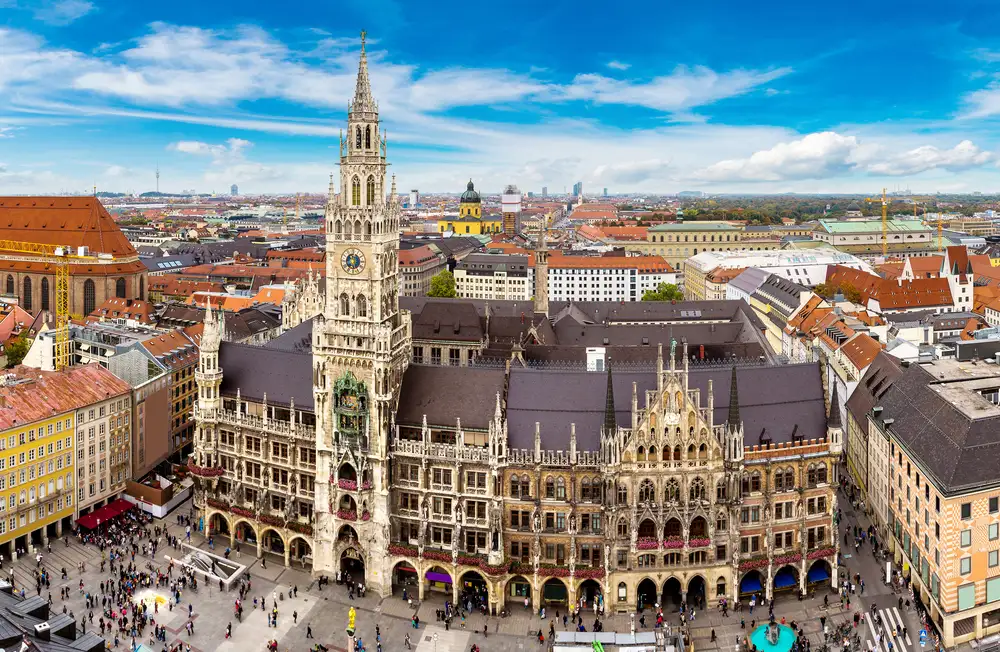
Munich
Arriving in Munich, you would be forgiven for thinking you were on the set of a movie about old Bavaria. At the Old Town beer halls, barmaids laced in dirndl dresses serve up frosty Helles lager, as oom-pah music drifts across the Marienplatz square. Men in lederhosen and checked shirts merrily give toasts as they knock glasses, or steins, as they’re known here. They sit at tables laden with wurst sausage and giant pretzels oozing with herby butter. This is Germany’s Germany, a place where folk traditions never stopped, and the revelry doesn’t either. Even when it isn’t Oktoberfest, the town’s notorious beer-drinking celebration, Munich is always happy to show you a good time. Simply cast your eyes around the lavish, gilded banquet hall at the Munich Residenz, the 13th-century Wittelsbach palace. You’ll see Munich has been impressing guests for centuries. Or, swing by the BMW Museum and check out the classic German cars. They even let you sit inside to test out the new models. At the city’s English Gardens, surfers ride waves on one of the park’s rivers. Munich is filled to the brim with this kind of pure-hearted German fun.

Learn About Munich
Build Munich Trip
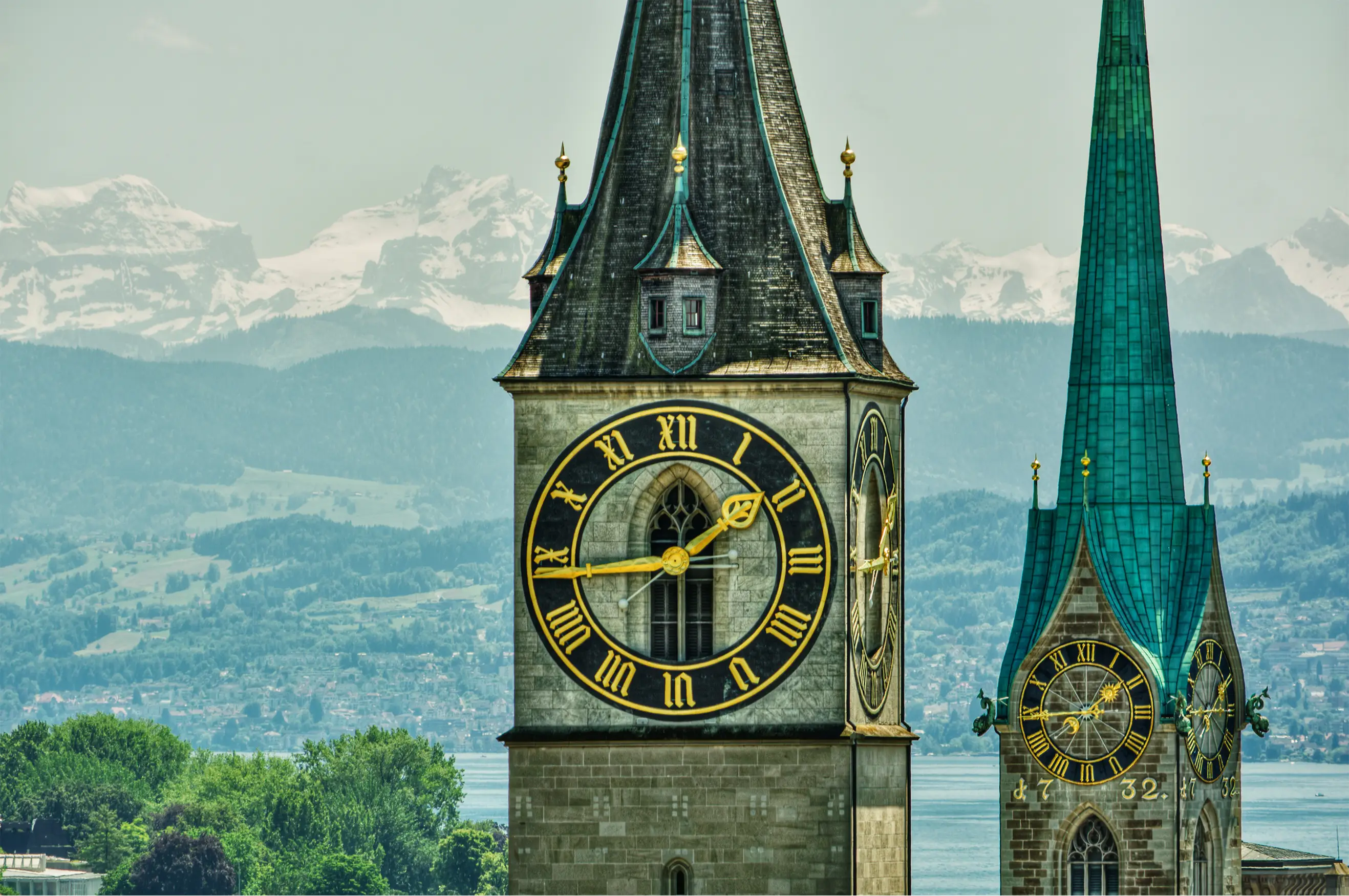
Zurich
Zurich is Switzerland’s biggest city, located in the center of the country’s German-speaking region. It’s this location, superbly connected to almost everywhere else by train and close to an international airport, that makes Zurich an obvious destination for tourists. Well, that’s one of the reasons. There’s also the city’s bevy of bars and restaurants, the lakeside views, and stunning architecture around every corner.Take a stroll down the Bahnhofstrasse, a street known around the world for its unrivaled shopping. Weave through crowds of shoppers as you pass rows of world-famous and exclusive brands. Zurich is a small city, but that just makes it easier to get around. Lindenhof Hill, a slight rise of land in the center, offers views across all of the town. Among the city’s most striking features are the Grossmünster towers, which can also be climbed. This is a proud, sophisticated, and elegant city.

Learn About Zurich
Build Zurich Trip

Lucerne
Lucerne’s international name may be French, but this spellbinding little city is actually situated in the heart of Switzerland’s German area. Lucerne was one of the first cities to join the Swiss Confederation and is a microcosm of all the typical Swiss quirks and charm that draw visitors to the country from all over the world. The city’s old town is beautifully preserved and also extremely compact. This is a place that is perfect for walking and looking. You’ll soon start to get an in-depth feel for the Old Town after just a few hours. Stroll across the famous Kapellbrücke bridge or the smaller Spreuerbrücke, or wander to the Löwendenkmal, the wounded lion memorial carved from a rock face. Stunning nature surrounds Lucerne, and the landmark Mount Pilatus towers over the city. It’s possible to climb the mountain, where hikers (and cable-car riders) will be rewarded with breathtaking views of the town below and the Alps beyond. Back at ground level, Lake Lucerne calls out for boat trips, which stop at the many villages and parks around the shores.

Learn About Lucerne
Build Lucerne Trip

Salzburg
You've probably heard this before— the city of Salzburg is straight out of a fairytale. Nestled in the mountains, this romantic city's Baroque architecture with colorful domes and spires is especially striking against the ancient fortress and Austrian Alpine backdrop. If you're looking for an amazing view, climb up to Hohensalzburg Fortress, Central Europe's largest intact fortress, for a jaw-dropping panorama of the city backed by misty mountains. Perhaps most famous for being the birthplace of the renowned composer Wolfgang Amadeus Mozart and the filming location for the classic The Sound of Music, this city has much to offer. Salzburg has become an important artistic and cultural center, featuring magnificent concert halls that uphold the city's tradition of classical music every day of the year, as well as acclaimed art exhibitions and museums. If you do it right, your visit to Salzburg will immerse you in the city's unforgettable atmosphere and keep you coming back for more.

Learn About Salzburg
Build Salzburg Trip

Nuremberg
One of the most authentic, storied German destinations, Nuremberg's picturesque old town, glorious castle, and buzzing Christmas Market makes this city a time-true classic. The ideal gateway to old Bavaria, Nuremberg offers a primer in German history before you embark on the lovely journey through old Bavaria, known as the Romantic Road. Considered the capital of the Holy Roman Empire in the middle ages, Nuremberg would have felt like the center of the world as a procession of kings and emperors passed through its magnificent gates. When the German Renaissance came, Nuremberg was at its heart. Albrecht Dürer, the great German master artist, was born here, and Martin Luther called Nuremberg Germany's 'eyes and ears'. Skip forward a few centuries, and the city took a dark turn, as Nuremberg became a gathering point for the German National Socialists. Slightly outside of town, you can still find the Nazi Party Rallying Grounds, a sobering reminder of the not so distant past. If it all gets too heavy, you can end the day with a glass of rotbier (red beer) and mull it over. Nuremberg is a must-see for anyone who wants to delve into Germany's past.

Learn About Nuremberg
Build Nuremberg Trip

Frankfurt
Dubbed ‘Mainhatten’ for its glass highrises, financial prowess, and proximity to the Main River, Frankfurt offers a fascinating glimpse into the ‘engine room’ of Europe’s economy with an unexpected twist. Among the glass and steel buildings, the old-worldly Römerberg square will give you a double-take. The square’s 15th-century half-timbered houses, old statues, and church spires contrast dramatically against the modern 21st-century skyscrapers beyond. If you visit at Christmas, the Römerberg is truly special, aglow with the light of the tallest Christmas tree in Germany. The square fills with stalls selling handicrafts, and the air is scented with hot apple wine, honey, and cinnamon. Delve deeper into Frankfurt and you’ll find a substantial museum district, the Museumsufer (Museum Embankment). This area features a cluster of twelve museums on either side of Main River. This includes the Städel, home to Tischbein’s famous painting of renowned writer Johann Wolfgang von Goethe, one of Frankfurt’s most prestigious sons. The more time you spend in Frankfurt, the more you’ll discover a highly cultured city lurking beneath its glass facades. If you have the time, Frankfurt is certainly worth a second look.

Learn About Frankfurt
Build Frankfurt Trip

Munich
Arriving in Munich, you would be forgiven for thinking you were on the set of a movie about old Bavaria. At the Old Town beer halls, barmaids laced in dirndl dresses serve up frosty Helles lager, as oom-pah music drifts across the Marienplatz square. Men in lederhosen and checked shirts merrily give toasts as they knock glasses, or steins, as they’re known here. They sit at tables laden with wurst sausage and giant pretzels oozing with herby butter. This is Germany’s Germany, a place where folk traditions never stopped, and the revelry doesn’t either. Even when it isn’t Oktoberfest, the town’s notorious beer-drinking celebration, Munich is always happy to show you a good time. Simply cast your eyes around the lavish, gilded banquet hall at the Munich Residenz, the 13th-century Wittelsbach palace. You’ll see Munich has been impressing guests for centuries. Or, swing by the BMW Museum and check out the classic German cars. They even let you sit inside to test out the new models. At the city’s English Gardens, surfers ride waves on one of the park’s rivers. Munich is filled to the brim with this kind of pure-hearted German fun.

Learn About Munich
Build Munich Trip

Zurich
Zurich is Switzerland’s biggest city, located in the center of the country’s German-speaking region. It’s this location, superbly connected to almost everywhere else by train and close to an international airport, that makes Zurich an obvious destination for tourists. Well, that’s one of the reasons. There’s also the city’s bevy of bars and restaurants, the lakeside views, and stunning architecture around every corner.Take a stroll down the Bahnhofstrasse, a street known around the world for its unrivaled shopping. Weave through crowds of shoppers as you pass rows of world-famous and exclusive brands. Zurich is a small city, but that just makes it easier to get around. Lindenhof Hill, a slight rise of land in the center, offers views across all of the town. Among the city’s most striking features are the Grossmünster towers, which can also be climbed. This is a proud, sophisticated, and elegant city.

Learn About Zurich
Build Zurich Trip

Lucerne
Lucerne’s international name may be French, but this spellbinding little city is actually situated in the heart of Switzerland’s German area. Lucerne was one of the first cities to join the Swiss Confederation and is a microcosm of all the typical Swiss quirks and charm that draw visitors to the country from all over the world. The city’s old town is beautifully preserved and also extremely compact. This is a place that is perfect for walking and looking. You’ll soon start to get an in-depth feel for the Old Town after just a few hours. Stroll across the famous Kapellbrücke bridge or the smaller Spreuerbrücke, or wander to the Löwendenkmal, the wounded lion memorial carved from a rock face. Stunning nature surrounds Lucerne, and the landmark Mount Pilatus towers over the city. It’s possible to climb the mountain, where hikers (and cable-car riders) will be rewarded with breathtaking views of the town below and the Alps beyond. Back at ground level, Lake Lucerne calls out for boat trips, which stop at the many villages and parks around the shores.

Learn About Lucerne
Build Lucerne Trip
prev
next


 Map of Your Itinerary Route
Map of Your Itinerary Route
Zoom In to the cities to see your itinerary in more detail


 4.8
4.8 






